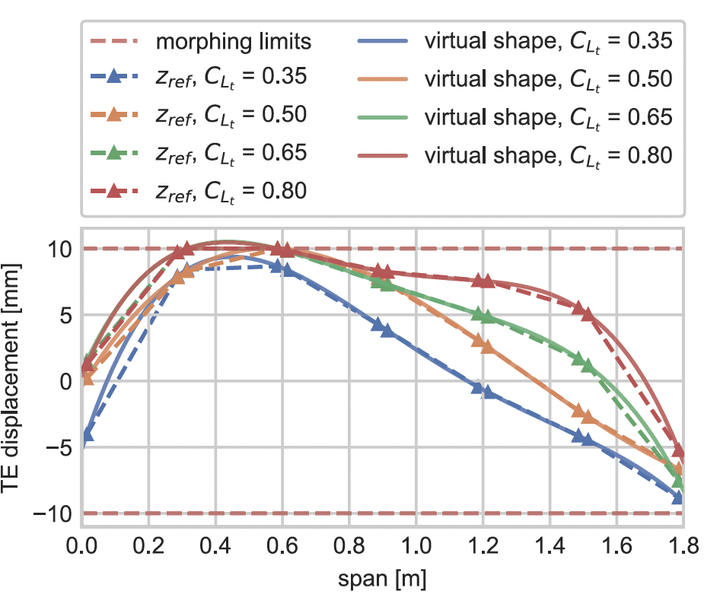On-Line Black-Box Aerodynamic Performance Optimization for a Morphing Wing With Distributed Sensing and Control
 Optimized wing shapes.
Optimized wing shapes.
Abstract
Abstract—Inspired by nature, smart morphing technologies enable the aircraft of tomorrow to sense their environment and adapt the shape of their wings in flight to minimize fuel consumption and emissions. A primary challenge on the road to this future is how to use the knowledge gathered from sensory data to establish an optimal shape adaptively and continuously in flight. To address this challenge, this paper proposes an online black-box aerodynamic performance optimization architecture for active morphing wings. The proposed method integrates a global online-learned radial basis function neural network (RBFNN) model with an evolutionary optimization strategy, which can find global optima without requiring in-flight local model excitation maneuvers. The actual wing shape is sensed via a computer vision system, while the optimized wing shape is realized via nonlinear adaptive control. The effectiveness of the optimization architecture was experimentally validated on an active trailing-edge camber morphing wing demonstrator with distributed sensing and control in an open jet wind tunnel. Compared to the unmorphed shape, a 7.8 percent drag reduction was realized, while achieving the required amount of lift. Further data-driven predictions have indicated that up to 19.8 percent of drag reduction is achievable and have provided insight into the trends in optimal wing shapes for a wide range of lift targets.